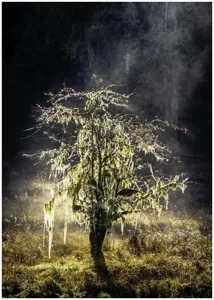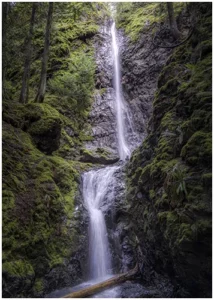
Dealing with Harsh Light in Landscape Photography
Yes, we all know that shooting in harsh light is taboo, and this sounds a


Fine art black and white photography is more than just a classic aesthetic, it’s a powerful artistic expression that relies on light, shadow, and contrast to tell a story. From its early beginnings in the 1800s to modern digital advancements, black and white photography has remained a timeless medium for capturing emotion and depth.
Understanding its history can help you appreciate the techniques and vision behind the images. In this guide, we’ll explore the origins of black and white photography, its evolution, and the artists who have shaped this remarkable art form.
Black and white photography has a rich history filled with innovation and creativity. Understanding its roots helps us appreciate its artistic value and techniques.
Photography’s journey began in the early 1800s with the discovery of photography itself. Here are some key moments from its history:
Many photographers have shaped black and white photography, influencing how we view it today.
At first, black and white photography was a slow process, done in a darkroom. But technology improved, changing how we capture and edit photos today. Digital tools have made creating and enhancing black and white images easier than ever.
| Aspect | Traditional Photography | Modern Photography |
|---|---|---|
| Capture method | Old-school film cameras | Slick digital sensors |
| Development Process | Darkroom drama | Quick software sprucing (e.g., Photoshop) |
| Accessibility | Mainly for the pros | Open to all, newbies included |
| Time | Take years | Snappy clicks and swift edits |
Understanding the history of black and white photography can deepen your appreciation for it. It allows you to tap into its artistic depth and significance in today’s world.
...Bob
The industry standard for photo enlargement is getting better. Download your free trial today!
Shooting in black and white is more than just hitting the desaturate button. It’s about mastering light, shadow, and contrast to bring your images to life. Let’s dive into the details of what you need to create stunning monochrome shots.
Light is your secret weapon in photography. It can make your photos pop. Learning to play with lighting and shadows can turn a simple photo into something amazing. Here’s what to watch for:
Contrast is key in black and white photos, adding that extra oomph. It greatly affects how your images look, whether bold or subtle. Here’s how to think about contrast:
| Contrast Type | What it Does | Magic Effect |
|---|---|---|
| Hight contrast | Major difference between light and dark. | Commands attention with bold visuals. |
| Low Contrast | Gentle shifts between light and dark. | Creates a mellow, dreamy vibe. |
| Medium Contrast | Nice balance of light and dark. | Delivers detailed and textured shots. |
In black and white, the in-betweens are everything. Understanding shades of gray can elevate your photography. Here’s the scoop:
When you master these elements, your black and white photos will be stunning. People won’t be able to look away.
Fine art black and white photography is more than just a filter. It’s a form of storytelling without colour. Let’s explore the key elements that can turn your photos into powerful masterpieces.
Tonal range is like a black and white rainbow. It’s all the shades between the darkest black and the brightest white. Mastering this mix creates photos with depth and emotion that draw you in.
Getting this right takes skill, not luck. Experiment with light on your subject and edit to perfection. Every shadow and highlight matters, so trust your instincts!

In the game of black and white, pure white and deep black are your stark extremes—the peanut butter and jelly of making a scene pop. These solid colours are the secret sauce to kicking up the vibe a notch.
Master the art of balancing these extremes, and you’ll have folks pausing to feel your photos instead of just seeing them. Place them smartly within your shots for a real pow.
This ain’t just old school—it’s timeless. Black and white strip away the distraction so you can focus on the raw beauty of composition.
By leaning on these artistic muscles, you weave a tale without words—each viewer reads it through their own lens. So gear up to engage them on a journey through their mind’s eye, where every click turns into a personal rendezvous.
Post-processing is pretty much the secret sauce that gets your fine art black and white photography from “meh” to “WOW.” This step lets you tweak your pics to make them pop with feeling and personality.
Want your black and white photos to look top-notch? Try these tricks:
Contrast and texture in black and white shots make a big difference. Here’s how to play around with contrast and hue:
Playing around with these post-processing tricks can majorly elevate your black and white photography game, letting your artistic flair really shine through.
Black and white photography plays a pretty cool role in the art world these days. It’s got a knack for pulling on our heartstrings and making us look twice by stripping away the bells and whistles of colour.
Black and white photography continues to draw folks in with its unique charm. These kinds of photos invite you to pause and think. Photographers often play with texture, form, and light, crafting pictures that grab your attention without all that colour razzle-dazzle.
| Thing To Know | Why They Matter in Art Today |
|---|---|
| Timeless appeal | Brings back feelings of the past and seems to last forever |
| Emotional Impact | Touches deep emotions, strikes a chord with the viewer |
| Shape and Form | Draws your eye to lines and shapes, not colour overload |
| Creative Freedom | Artists express their own vibe and style |
Black and white photography is a big hit in galleries. It lets artists explore big ideas like who we are. They can do this without the distraction of colour.
| Gallery Impact | Why They Matter |
|---|---|
| More Shows | Solo exhibitions for black and white art are a hit |
| Selling Strong | Black and white photos often hit the jackpot at auctions |
| Cultural Echoes | These snaps carry stories from history, making their mark a lasting one |
Imagine a world without colour—black and white photos take you there. They offer a fresh emotional playground. Without colour, your eyes focus on textures and shapes.
Missing colour can tug at feelings of nostalgia or melancholy. It’s like your mind paints its own pictures from memories or thoughts.
Storytime gets a twist with black and white photography. Shedding colour zeroes in on contrasts and design. It makes the storytelling punchier.
It’s like cranking up the emotional volume. You dive deep into the scene unfolding before your eyes.
Fine art and black and white photography are a match made in emotional heaven. They capture moments that speak to the heart. Here’s how some themes hit home:
Feelings stirred by black and white fine art photography dance to a different tune. They map out fresh paths for creativity and connection.
In the world of fine art black and white photography, you’re on an adventure of creativity and discovery. By diving into its roots, you learn the tricks and tools. This lets you snap pictures that tell stories straight from the heart.
Black and white photos do more than just strip away colour—it’s about digging deep into emotion and imagination. This path never gets old. Play around with light, dark, and everything in between, and let your style pop with your own twist on this medium.
Remember, this isn’t just about capturing scenes without colour; it’s about revealing depth, feelings, and creative sparks. This art form is your stage, a space where stories unfold with every click of the shutter.
Jump into the art world of black and white photography, and let your one-of-a-kind view light up your work.

Yes, we all know that shooting in harsh light is taboo, and this sounds a

As a passionate waterfall photographer, I’ve discovered that exposure time and amount of light, be

Do you remember that perfect shot you took? But then, post-processing was a struggle? You’re